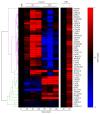The Potential Role of 8-Oxoguanine DNA Glycosylase-Driven DNA Base Excision Repair in Exercise-Induced Asthma
- PMID: 27524866
- PMCID: PMC4976190
- DOI: 10.1155/2016/3762561
The Potential Role of 8-Oxoguanine DNA Glycosylase-Driven DNA Base Excision Repair in Exercise-Induced Asthma
Abstract
Asthma is characterized by reversible airway narrowing, shortness of breath, wheezing, coughing, and other symptoms driven by chronic inflammatory processes, commonly triggered by allergens. In 90% of asthmatics, most of these symptoms can also be triggered by intense physical activities and severely exacerbated by environmental factors. This condition is known as exercise-induced asthma (EIA). Current theories explaining EIA pathogenesis involve osmotic and/or thermal alterations in the airways caused by changes in respiratory airflow during exercise. These changes, along with existing airway inflammatory conditions, are associated with increased cellular levels of reactive oxygen species (ROS) affecting important biomolecules including DNA, although the underlying molecular mechanisms have not been completely elucidated. One of the most abundant oxidative DNA lesions is 8-oxoguanine (8-oxoG), which is repaired by 8-oxoguanine DNA glycosylase 1 (OGG1) during the base excision repair (BER) pathway. Whole-genome expression analyses suggest a cellular response to OGG1-BER, involving genes that may have a role in the pathophysiology of EIA leading to mast cell degranulation, airway hyperresponsiveness, and bronchoconstriction. Accordingly, this review discusses a potential new hypothesis in which OGG1-BER-induced gene expression is associated with EIA symptoms.
Figures




References
-
- WHO. Global Surveillance, Prevention and Control of Chronic Respiratory Diseases. Geneva, Switzerland: World Health Organization; 2007.
-
- CDC.gov. Centers for Disease Control and Prevention—Fast Stats. 2015.
Publication types
MeSH terms
Substances
Grants and funding
LinkOut - more resources
Full Text Sources
Other Literature Sources
Medical
Molecular Biology Databases
Research Materials

